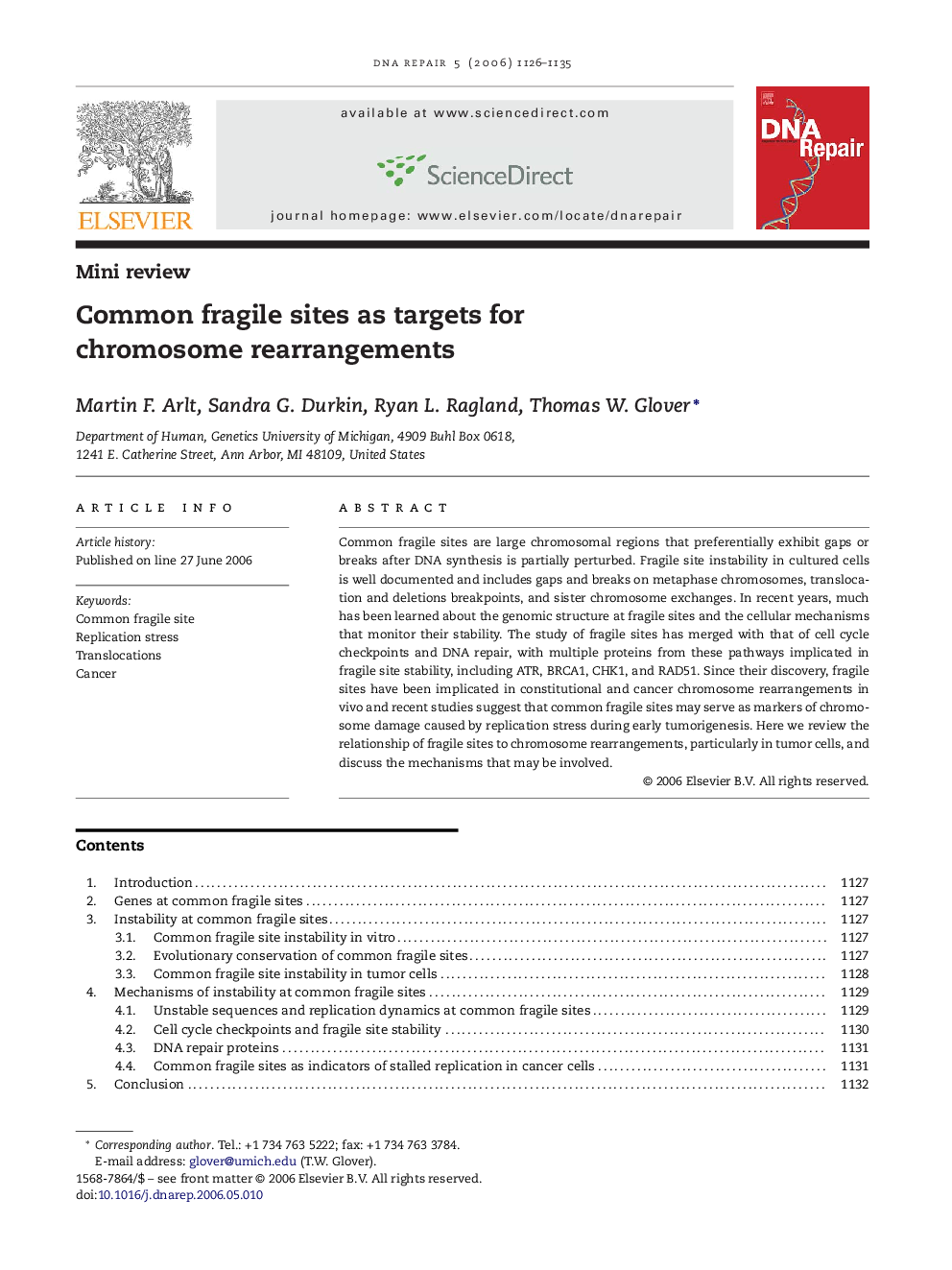| Article ID | Journal | Published Year | Pages | File Type |
|---|---|---|---|---|
| 1981097 | DNA Repair | 2006 | 10 Pages |
Common fragile sites are large chromosomal regions that preferentially exhibit gaps or breaks after DNA synthesis is partially perturbed. Fragile site instability in cultured cells is well documented and includes gaps and breaks on metaphase chromosomes, translocation and deletions breakpoints, and sister chromosome exchanges. In recent years, much has been learned about the genomic structure at fragile sites and the cellular mechanisms that monitor their stability. The study of fragile sites has merged with that of cell cycle checkpoints and DNA repair, with multiple proteins from these pathways implicated in fragile site stability, including ATR, BRCA1, CHK1, and RAD51. Since their discovery, fragile sites have been implicated in constitutional and cancer chromosome rearrangements in vivo and recent studies suggest that common fragile sites may serve as markers of chromosome damage caused by replication stress during early tumorigenesis. Here we review the relationship of fragile sites to chromosome rearrangements, particularly in tumor cells, and discuss the mechanisms that may be involved.
